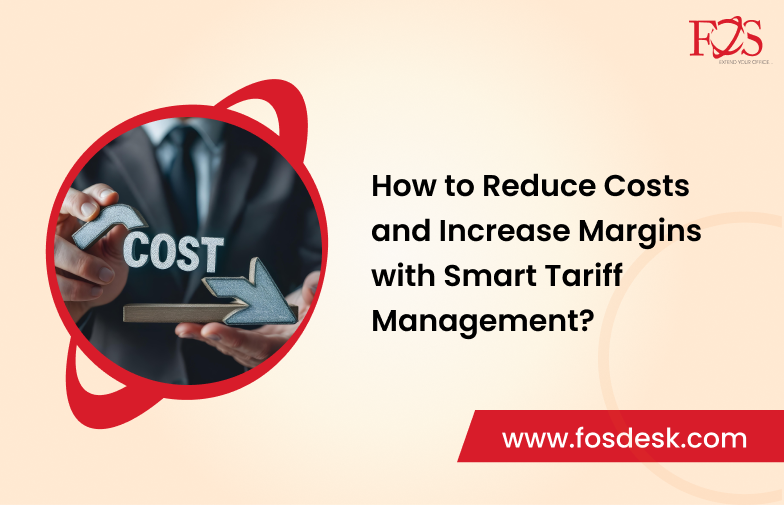Cost management in the logistics and freight forwarding industry involves more than just taking shortcuts; it also involves making more informed choices. Tariff management is one of the most underappreciated methods for increasing profit margins. Whether you are in charge of logistics or finance, this guide will show you how to optimize tariff handling to cut down on wasteful spending and increase profitability.
Let’s explore how tariff management can improve your financial performance.
Why Tariff Management Matters
Tariffs influence nearly every aspect of your logistics operations. From shipment registration to final delivery, mismanaging tariffs can lead to unexpected fees, compliance issues, and customer dissatisfaction.
When done right, pricing and tariff management ensure that you are not overpaying and are fully aligned with the latest trade regulations, giving your business a strong financial edge.
Understand the True Cost Behind Shipments
You might think you are already controlling shipment costs, but are you accounting for unstated fees, out-of-date tariffs, or incorrectly classified goods? Every time a shipment is registered, there is a chance of cost leakages due to incorrect tariff codes or overlooked rate changes. Getting into the habit of reviewing each shipment’s tariff category and ensuring it matches the latest trade standards can help prevent cost escalations.
Digitize and Automate Tariff Workflows
Still working on Excel sheets and manual calculations? That might be the root of your cost inefficiencies. Digital tools can automate tariff calculations, monitor changes, and send alerts when discrepancies are detected.
Integrating your logistics system with a Logistics BPO service can also help streamline these tasks. A dedicated BPO team can monitor international tariff updates, perform real-time audits, and ensure smooth shipment registration, saving you hours of manual effort.
Leverage Historical Shipment Data
Examine your shipment history to find trends that indicate overcharging and address persistent problems.
Imagine paying more for shipments to a specific area on a regular basis. It can be the result of out-of-date rates or inaccurate documentation. By identifying these patterns, you can modify your procedures before they have another effect on your budget.
Get Help from Tariff Experts
You are not expected to know every single tariff code out there. That is where logistics BPO services come in handy. By outsourcing this function, you will have access to trained tariff specialists who can ensure your classifications are spot-on, avoiding costly customs penalties.
In fact, according to a 2023 global freight survey, nearly 65% of companies that partnered with logistics BPOs reported a 10–18% reduction in tariff-related charges.
Revisit Tariff Agreements Regularly
Don’t assume that your current agreements with carriers or vendors are the best you can get. Tariffs change, and your shipment volumes may have increased since the last negotiation.
Re-evaluating your contracts quarterly can help you renegotiate for better rates. Use data insights to prove your volume and negotiate more favorable terms.
Use Smart Tools to Track Real-Time Tariff Fluctuations
Tariffs are dynamic and change in response to port laws, trade agreements, and geopolitical events. You can take preventative action by using smart tracking technologies that can give you real-time alerts on tariff changes.
You can cut expenses by delaying non-urgent deliveries, rerouting shipments, or changing vendors if you stay informed.
Improve Coordination Between Finance and Operations
Often, cost leakages happen when finance teams and logistics teams aren’t in sync. As someone in a managerial or financial role, you must ensure that shipment registration processes, tariff audits, and vendor agreements are reviewed by both teams regularly.
This cross-functional communication ensures that budget allocations align with operational realities.
Train Your Team on Tariff Intelligence
Sometimes ignorance is the issue rather than the tariff. Your team ought to be aware of how minor classification mistakes or inaccurate paperwork might result in excessive payments.
These knowledge gaps can be promptly filled by hosting frequent training sessions or by hiring a logistics BPO service to help with compliance.
Monitor Compliance to Avoid Penalties
A single customs violation can lead to fines, shipment delays, or reputational damage. By having a tariff compliance framework in place, you not only stay within legal boundaries but also avoid unexpected costs that eat into your profit margins.
According to a 2024 report by Logistics Insight Weekly, businesses that had a dedicated tariff compliance plan reduced penalty costs by 22% annually.
Conclusion:
Tariff management is a strategic tool, not only a backend operation. You may increase margins, reduce errors, and obtain financial predictability by incorporating it into your cost management activities.
Consider it this way: Your profit margin increases by one dollar for every dollar you save using wise tariff methods.
You can securely control expenses by automating cargo registration, contracting out tariff operations to a logistics business process outsourcing (BPO) agency, or teaching your staff to see warning signs.
Are you prepared to begin making more intelligent logistics choices? It’s time to make tariff management a source of revenue.

FAQs
1. How can smart tariff management improve my company’s profit margins?
By minimizing overcharges, reducing penalties, and optimizing carrier agreements, smart tariff management helps you cut down on unnecessary expenses, allowing more of your revenue to translate into profit.
2. What’s the role of a Logistics BPO service in tariff management?
A Logistics BPO service takes over time-consuming tasks like tariff classification, shipment audits, and documentation checks, ensuring accuracy while freeing up your in-house team for strategic work.
3. Is it necessary to invest in automation tools for tariff management?
Yes. Automation not only reduces human error but also provides real-time insights and alerts that help you make proactive decisions, improving efficiency and reducing cost leakage.
